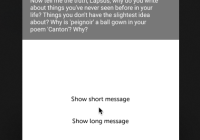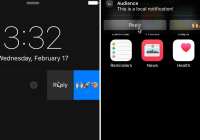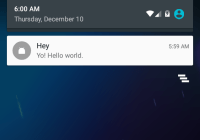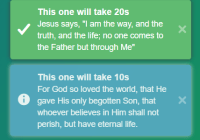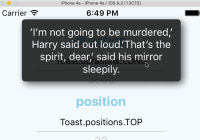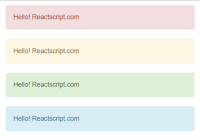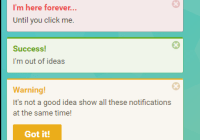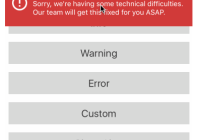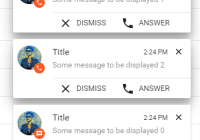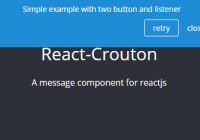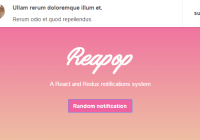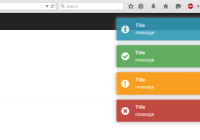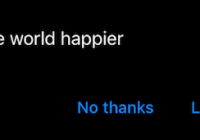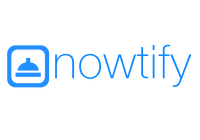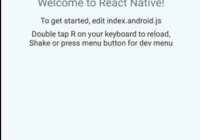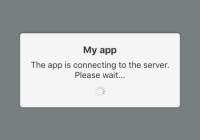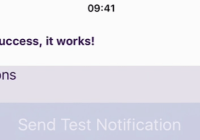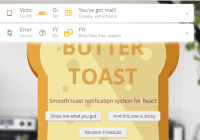react-native-messages
React Native notification-like messages
Features
- Customizable message component
- Fast native driver animations
- Auto-hide current message to display a next one
- Robust implementation, used in production code
Installation
$ npm install react-native-messages Usage
- Add
<MessageBar/>to the top of your view hierarchy, as a last component. If you are usingreact-navigation, root navigator should be in place of<App/>. Root view should haveflex: 1:
import { MessageBar } from 'react-native-messages'; <View style={{ flex: 1 }}> <App/> <MessageBar/> <View>- Call
showMessagein any other component:
import { showMessage } from 'react-native-messages'; <Button onPress={() => showMessage('You are awesome!')}/>Config
| Prop | Type | Default |
|---|---|---|
| messageComponent | Component | Default message component |
| duration | Number | 1000 |
| slideAnimationOffset | Number | 40 |
| showAnimationDuration | Number | 255 |
| hideAnimationDuration | Number | 255 |
| closeOnSwipe | Boolean | true |
You can add custom config as a second argument to showMessage call to configure individual messages. E.g. showMessage('You are awesome!', { duration: 3000 }).
Custom message component
Default message will receive only string, but you can implement your own message component to work with any other objects e.g Error instances:
function Message({ message }) { if (message instanceof Error) { // return error-styled message } else { // return normal message } } <MessageBar messageComponent={Message}/> <Button onPress={() => showMessage(new Error('Boom!'))}/>Demo
$ git clone [email protected]:Qlean/react-native-messages.git $ cd react-native-messages/demo $ npm install $ npm start $ react-native run-android # assuming Android emulator is running: https://facebook.github.io/react-native/docs/getting-started.html#installing-dependencies Contributing
Same as demo. Run npm install in root directory to install ESLint.
